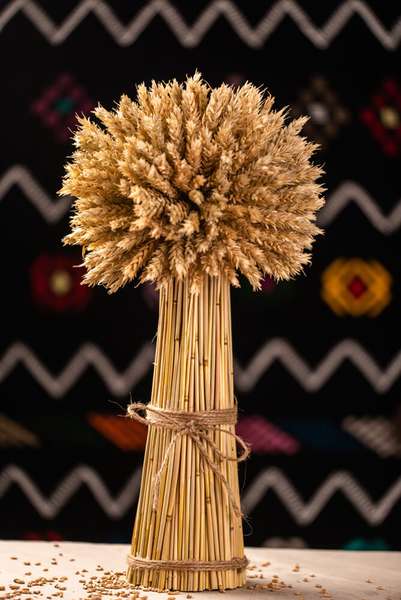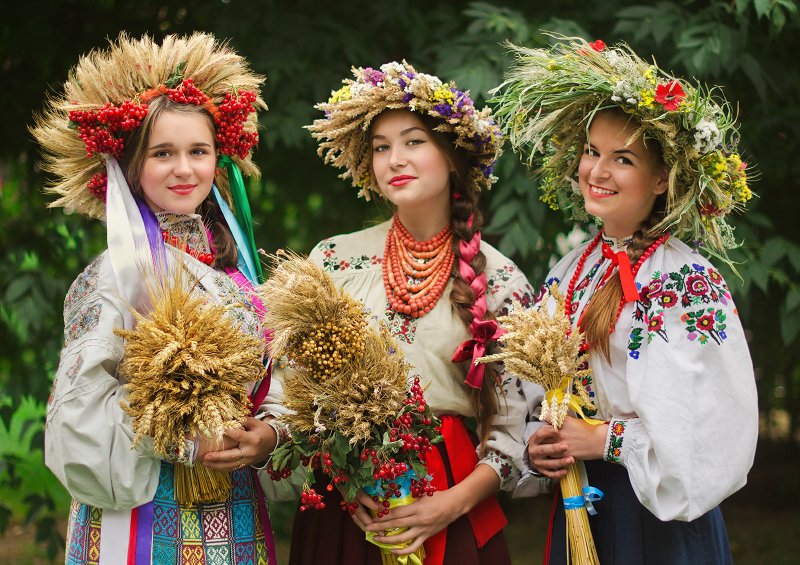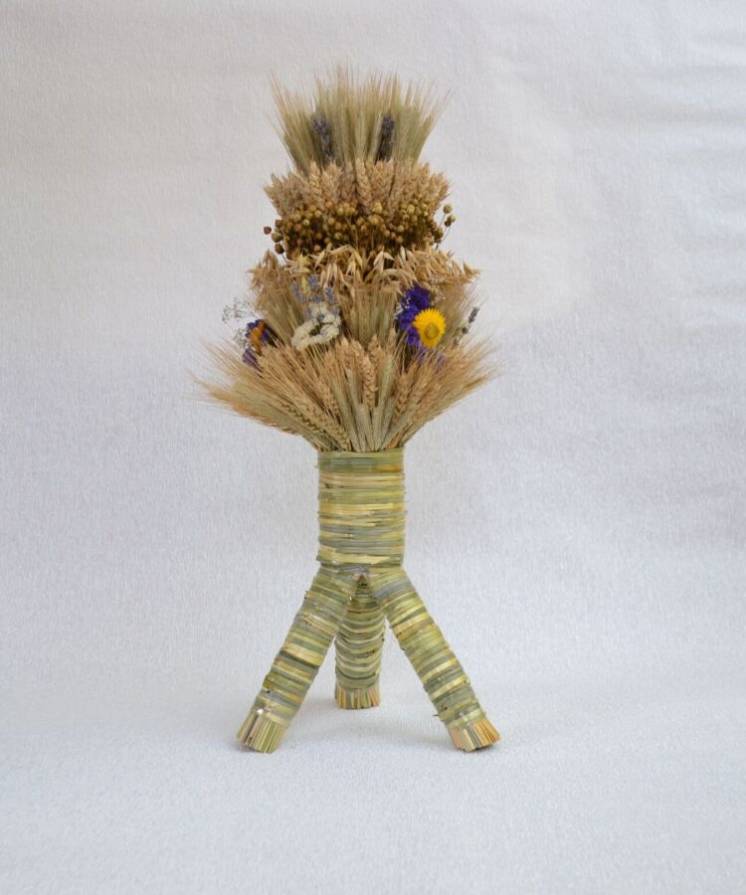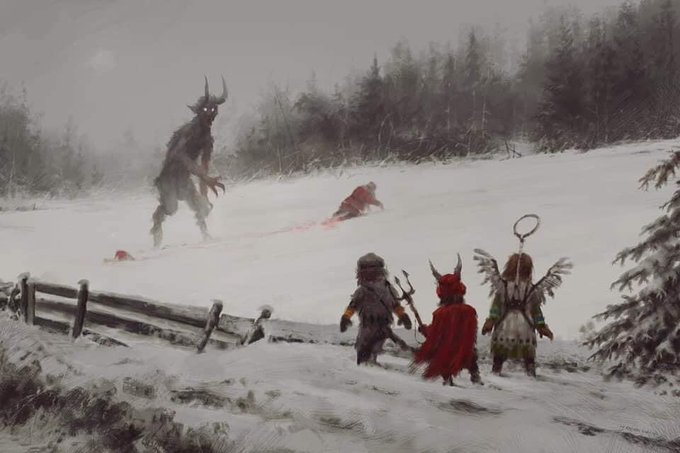
Thread: Meet Tanngnjostr and Tanngrisnir, the magic goats of Thor...They are the guys that pull his chariot... oldeuropeanculture.blogspot.com/2020/02/goat-r… 

In the story "Why is one of Thor's goats lame" we read that:
Once Thor travelled together with Loki. When evening came, they sought cover in a farmhouse. Thor then killed his goats with his hammer, Mjolnir, and skinned them, roasted them and everyone ate the meat...
Once Thor travelled together with Loki. When evening came, they sought cover in a farmhouse. Thor then killed his goats with his hammer, Mjolnir, and skinned them, roasted them and everyone ate the meat...
But, he said, nobody must break any of the bones to suck the delicious marrow.
But Thialfi, the farmer's son, broke one of the bones, because the marrow inside the bones tastes by far the best...
But Thialfi, the farmer's son, broke one of the bones, because the marrow inside the bones tastes by far the best...
Next morning Thor spread the two skins on the ground and laid all the bones on them. Then he swung his hammer, Mjolnir, and the skins and bones moved around until suddenly the two goats stood whole and completely alive again, ready to drive on...
But one of them had a bad leg! Thor got really angry, and Thialfi had to admit what he had done. As punishment Thialfi had to come with Thor as a servant...
And this is why one of Thor's goats is lame...
And this is why one of Thor's goats is lame...
Sounds familiar? The goat that gets killed and then resurrects? I talked about the goats that get killed and then get resurrected during European winter rituals in this thread:
https://twitter.com/serbiaireland/status/1341123716734988291
The goats whose death and resurrection symbolizes the end of winter and the beginning of spring...The death and resurrection of sun and nature...
Now there is a very strange fairy tale found in Serbia and Germany...It's about a goat...A very annoying goat, which is constantly complaining that it doesn't have enough to eat...Until its owner has enough... 

In German version of the story, the annoyed owner "shaves the goat off" and then whips it until it runs away...
genius.com/Brothers-grimm…
genius.com/Brothers-grimm…
In the Serbian version of the story, which is probably the oldest which survived, the owner kills the goat, skins it, salts it, puts it on the spit over the fire to roast it, when the goat jumps off the spit and runs away...
books.google.ie/books?id=yW9IA…
books.google.ie/books?id=yW9IA…
Just like in the story about Thor's goats...We should by now be quite used to resurrecting goats...But in Serbian fairytale the goat speaks, and it says:
"Ja sam jarac živodarac (živoderac), živ drt neodrt, živ klat nezaklat, živ pečen neispečen, živ jeden neizeden..."
"Ja sam jarac živodarac (živoderac), živ drt neodrt, živ klat nezaklat, živ pečen neispečen, živ jeden neizeden..."
In some versions of this story the goat calls himself (živoderac) which means "skinned alive"...In some versions he calls himself "živodarac" (from život darac), which means "life giver" and which actually rimes with "jarac" (goat): jarac živodarac...
Knowing the symbolic meaning of the resurrecting goat (the bringer, giver of spring, life) I think that what the resurrected goat says is:
I am the life-giving goat, skinned yet not skinned, slaughtered yet not slaughtered, roasted yet not roasted, eaten yet not eaten...
I am the life-giving goat, skinned yet not skinned, slaughtered yet not slaughtered, roasted yet not roasted, eaten yet not eaten...
Now...What the goat does next, in both Serbian and German version of the story, is that it decides to hide in an empty fox's lair...In the main Italian version of the story "Grandmother Goat decides to move into the Grandmother Fox's house"...
surlalunefairytales.com/book.php?id=11…

surlalunefairytales.com/book.php?id=11…


Anyway, the fox asks the fox to get out of its lair, but fox refuses and instead:
In the Italian version the goat shouts: "I am Godmother Goat. I have a sword at my side, and with my horns I will tear you in pieces"
We don't know if the German goat shouted anything or not...
In the Italian version the goat shouts: "I am Godmother Goat. I have a sword at my side, and with my horns I will tear you in pieces"
We don't know if the German goat shouted anything or not...
In the Serbian version, the goat shouts: "My teeth are long and sharp like stakes, I will cut you in half like a thread"...
Bad goat...
BTW, did I mention that Thor's goats also have big sharp teeth and eat raw meat?
Bad goat...
BTW, did I mention that Thor's goats also have big sharp teeth and eat raw meat?
In all the versions of this story, the poor fox enlists the help of different animals, who one after the other come to try to get the goat out of the fox's lair...They all fail, until finally:
In the Serbian version a hedgehog kicks the goat out...
In the German version a bee kicks the goat out...
In one Italian version a mouse in another a little bird and in yet another a cricket kicks the goat out...
WTF...
In the German version a bee kicks the goat out...
In one Italian version a mouse in another a little bird and in yet another a cricket kicks the goat out...
WTF...
Well I think that the only way to understand this part of the story is to turn to real animals that feature in it: Goat, Fox, Hedgehog, Bee, Field Mouse, Little Bird, Cricket...And check if maybe they are here as calendar markers...
Spoiler: they are...
Spoiler: they are...
I have already talked about the mating habits of Wild Ibex Goats and how because their mating season in Eurasia spans winter months (Nov-Jan), they became calendar markers for winter...
oldeuropeanculture.blogspot.com/2019/10/symbol…
oldeuropeanculture.blogspot.com/2016/12/goat.h…
oldeuropeanculture.blogspot.com/2019/10/symbol…
oldeuropeanculture.blogspot.com/2016/12/goat.h…

There is a Romanian legend about a grandmother who insulted the month of March. She did so either by badmouthing Him or by going up to the mountain with a herd of goats too early. March then borrowed frosty days from February and froze her to death...
oldeuropeanculture.blogspot.com/2019/11/baba-c…
oldeuropeanculture.blogspot.com/2019/11/baba-c…

Interestingly in Serbian folklore, "babini jarci" (grandmother's goats) and "pozаjmenci" (borrowed days), both mean "cold stormy snowy days in March or April"...Which can turn green spring full of life into this...
oldeuropeanculture.blogspot.com/2020/01/gryla.…
oldeuropeanculture.blogspot.com/2020/01/gryla.…

So I believe that the evil killer goats in our story are the cold days at the beginning of spring...After the "goat of winter dies" and gets resurrected...
Now let's have a look at mating seasons of Wild European goats and Foxes. Why? To see if these seasonal activities, which occur every year at the same time, are so easily observable and impossible to ignore, that they make good calendar markers...
Wild European goats mating season starts every year in December and lasts until January...During that time the wild goats jumping and fighting are impossible to miss...Hence calendar marker: when goats mate = Dec-Jan...
Foxes mating season starts in January and ends by the middle of March...Mating takes place during the night...Foxes make really loud mating calls which can easily wake you up and are basically impossible to miss...Hence calendar marker: when foxes mate = Jan-Mar...
So when Wild European goats mating season is over, the winter is over too (end of January)...The goat dies and gets resurrected (beginning of February). Spring begins...
At the same time (Feb) foxes are out partying...It's the middle of their mating season (Jan-Mar)...The resurrected goat finds empty fox's lair and takes over...
The fox has finished with her looooove (February - March) and is pregnant and needs her lair because the litter arrives in late March, and the cubs remain exclusively inside the lair for about six to eight weeks...
Now look at the animals that finally manage to get the evil undead big toothed goat out of the fox's lair in the two (according to ethnographers) oldest versions of the story, Serbian and German:
Serbian: Hedgehogs - Hibernate in holes from October to April
German: Bees - Hide in hives from November to April
German: Bees - Hide in hives from November to April
So in both cases, the animals that finally get rid of the scary goat, which is the symbol of later March frosts, are animals that reappear in nature in April...
How interesting....
How interesting....
By the way
Field mice, hide during winter, appear after the snow has melted and start mating in March - April
Birds, here probably migratory birds, appear in March - April
And for crickets...Well European field cricket turn into adults in April
Field mice, hide during winter, appear after the snow has melted and start mating in March - April
Birds, here probably migratory birds, appear in March - April
And for crickets...Well European field cricket turn into adults in April
So, crazy random rubbish of a story, or a complex animal calendar markers filled allegory?
• • •
Missing some Tweet in this thread? You can try to
force a refresh




















